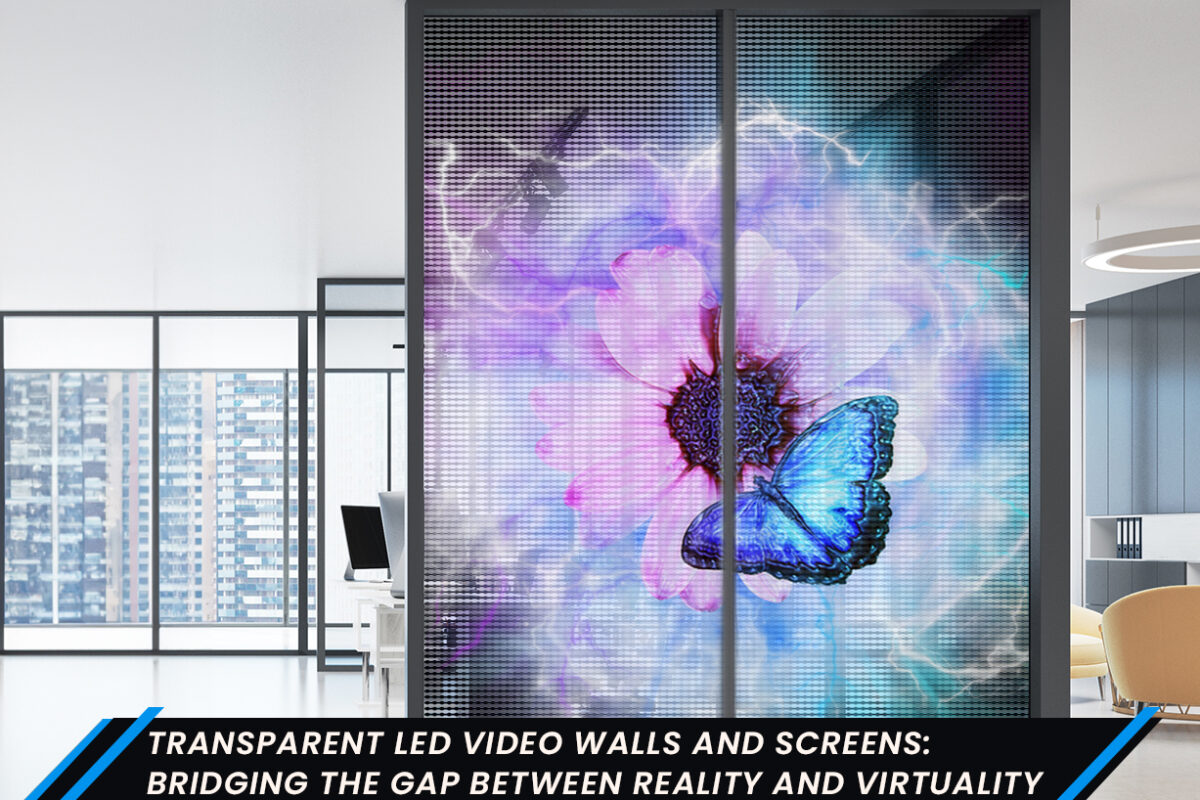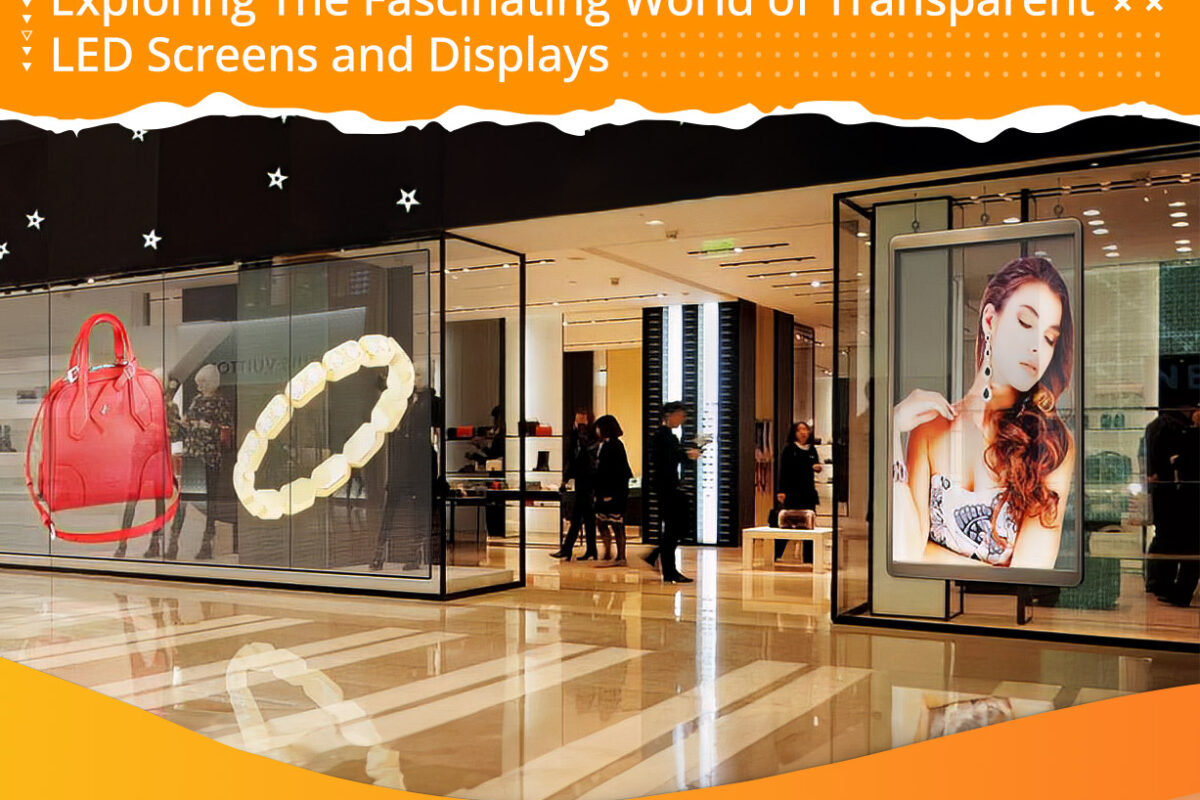In the realm of modern technology, innovation constantly pushes the boundaries of what is possible. One such groundbreaking development is the emergence of transparent LED video walls and screens. These marvels of engineering seamlessly blend the physical and virtual worlds, creating awe-inspiring visual experiences that were once confined to the realm of science fiction. In this in-depth exploration, we will unravel the features, applications, benefits, and implications of transparent LED technology, a revolutionary leap towards a future where screens become a canvas for both content and reality.
1. Transparent LED Technology: A Glimpse into the Future
Transparent LED technology, often referred to as see-through displays or clear screens, transforms the conventional notion of a display. Unlike traditional opaque screens, transparent LED video walls and screens enable users to see both the content displayed and the physical environment behind it. These screens use LEDs that are meticulously integrated into a transparent substrate, resulting in a display that seems almost ethereal in its execution.
2. Features that Defy Imagination
2.1. Visual Elegance: Transparent LED screens are known for their aesthetic appeal. With the ability to merge seamlessly into any environment, they do not obstruct the view, but rather enhance it. These screens retain their transparency while displaying high-quality, dynamic content, creating an immersive and surreal experience.
2.2. Seamless Integration: These screens can designed to fit various sizes, shapes, and configurations, allowing them to incorporated into existing architecture and spaces. This flexibility enables architects and designers to innovate without constraints, resulting in stunning visual installations that are an integral part of the design.
2.3. Transparency Levels: Transparent LED screens offer adjustable transparency levels. Depending on the requirement, the opacity of the display can altered, making it possible to achieve varying degrees of translucency. This feature is particularly useful in applications where privacy needs to maintained while still showcasing dynamic content.
2.4. High Brightness and Contrast: Contrary to the notion that transparent displays sacrifice visual quality for transparency, modern transparent LED technology offers high brightness and contrast ratios. This ensures that content remains vivid and captivating even in well-lit environments.
3. Applications Beyond Imagination
3.1. Retail and Advertising: Transparent LED screens are a game-changer in the retail industry. Storefronts can now transform into interactive and immersive showcases, displaying products while maintaining a connection with the outside world. This creates a unique shopping experience that captivates potential customers and draws them into the store.
3.2. Museums and Galleries: In the world of art and culture, transparent LED technology opens new avenues for creativity. Museums and galleries can use these screens to provide supplementary information about artworks or create dynamic visual narratives that enrich the visitor experience without distracting from the art itself.
3.3. Architecture and Interior Design: Architects and interior designers are embracing transparent LED screens to craft innovative spaces. These screens can seamlessly integrated into building facades, interior partitions, and even furniture, transforming spaces into dynamic and captivating environments.
3.4. Entertainment and Events: Transparent LED video walls are revolutionizing the entertainment industry. Concerts, festivals, and live events benefit from the interplay of real-life visuals and digital content, creating visually stunning stages and enhancing audience engagement.
3.5. Corporate Communication: Transparent LED screens find a place in corporate settings as well. They can used in conference rooms, lobbies, and meeting spaces to display relevant information, company updates, and presentations without obstructing the view or ambiance of the space.
4. Benefits That Transform Industries
4.1. Captivating Visual Impact: The combination of transparency and dynamic content results in a captivating visual impact that resonates with audiences. The ability to see both the real world and digital content simultaneously creates a mesmerizing experience that draws attention and sparks curiosity.
4.2. Enhanced Interactivity: Transparent LED screens can equipped with interactive capabilities, allowing users to engage with content in innovative ways. Touch interactions and gesture recognition technology turn these screens into interactive surfaces that respond to user input.
4.3. Branding and Differentiation: For businesses, transparent LED displays offer a unique branding opportunity. By seamlessly integrating these screens into storefronts or interior spaces, brands can differentiate themselves from competitors and create a distinct and memorable identity.
4.4. Energy Efficiency: Transparent LED screens are energy-efficient, just like their traditional counterparts. The LEDs used in these screens are designed to provide high-quality visuals while consuming minimal power, making them environmentally friendly and cost-effective.
5. Challenges and Considerations
5.1. Viewing Angles: One challenge with transparent LED technology is maintaining optimal viewing angles. These screens are best viewed head-on, and deviations from this angle can result in reduced transparency and image quality.
5.2. Content Creation and Adaptation: Designing content for transparent LED screens requires a thoughtful approach. Content creators need to consider the real-world elements behind the screen and how they interact with the digital content.
5.3. Maintenance and Longevity: Transparent LED screens require regular maintenance to ensure that the display quality remains consistent over time. Given their complex construction, repairs and replacements can more intricate compared to traditional screens.
6. Ethical and Societal Implications
6.1. Privacy Concerns: As transparent screens provide a view into both the digital and physical worlds, privacy concerns arise in certain applications. Transparent screens used in public spaces must strike a balance between displaying engaging content and respecting the privacy of individuals.
6.2. Visual Pollution: In urban environments, the introduction of transparent LED screens could potentially contribute to visual pollution if not regulated properly. Balancing the benefits of these displays with the aesthetics of the surroundings is crucial.
7. The Path Forward: A Vision Unveiled
Transparent LED video walls and screens have the potential to reshape how we perceive and interact with visual content. Their ability to merge the physical and digital realms creates a new canvas for creativity and innovation. As technology advances and the challenges are addressed, we can expect these screens to become more accessible and integrated into everyday life.
Conclusion
Transparent LED technology represents a remarkable fusion of innovation, design, and practicality. These screens transcend traditional limitations, providing a glimpse into a future where the line between the physical and virtual worlds is blurred. As industries continue to embrace these displays and adapt them to their unique needs, we are witnessing a paradigm shift in how we communicate, interact, and experience the world around us. Transparent LED video walls and screens are not just devices; they are gateways to a new era of visual experiences that bridge the gap between reality and virtuality.


